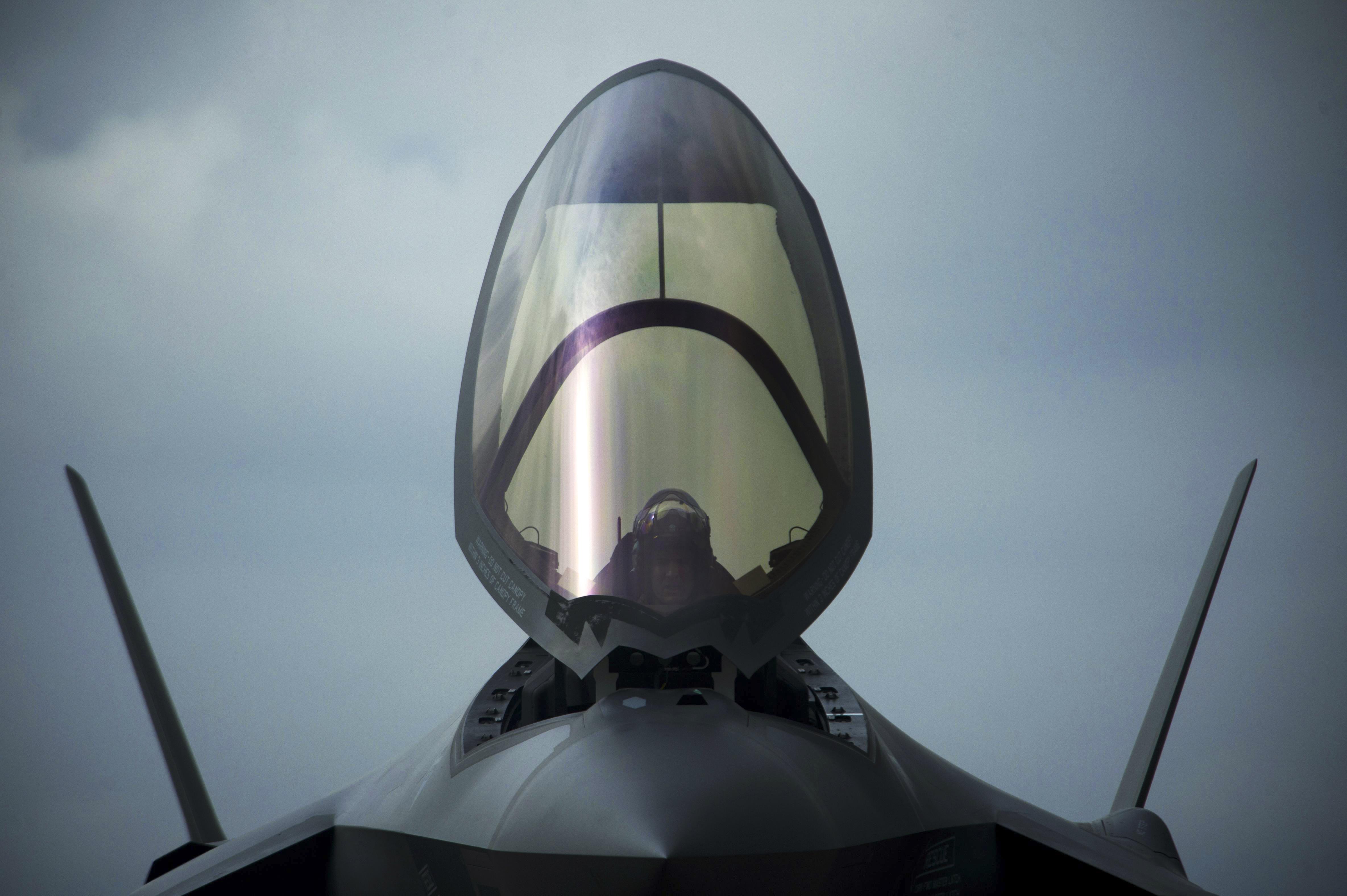The House Armed Services Committee's mark-up of the Fiscal 2018 National Defense Authorization Act looks to improve readiness. One amendment adopted June 28, 2017, requires the Air Force to brief Congress on its efforts to fix its pilot shortage. Here, an F-35A pilot from the 34th Fighter Squadron, at Hill AFB, Utah, completes pre-flight checks prior to departing RAF Lakenheath, England, May 7, 2017. Air Force photo by MSgt. Eric Burks.
The House Armed Services Committee marked up its version of the fiscal year 2018 National Defense Authorization Act Wednesday. The bill proposes $621 billion in base defense funding instead of the $640 billion HASC chairman Rep. Mac Thornberry (R-Texas) has said the military needs. Still, it proposes $47 billion more in spending than President Donald Trump’s defense budget request. Thornberry said at the Wednesday markup the bill represents “a compromise to get all the relevant House committees on the same page.” Nonetheless, he said the FY18 NDAA presented by HASC “takes significant steps toward repairing and rebuilding our military.”
Ranking member Rep. Adam Smith (D-Wash.) said the legislation, as it stands, was “highly unlikely” to pass because it “plussed up defense” at the expense of “other non-defense discretionary” spending. “This isn’t going to work,” Smith insisted, “absent a budget resolution” that removes the spending caps of the Budget Control Act and enables Congress to balance defense and non-defense spending.
The majority of the daylong markup session was occupied with individual amendments to policies included in the draft legislation.
In an effort to address the Air Force’s pilot shortage, one approved amendment would require the service to brief Congress on “efforts to maximize undergraduate pilot training,” including “an evaluation of the feasibility and efficiency of increasing the use of proximate civilian aviation facilities” to increase pilot training capacity.
Another adopted amendment seeks to address the Air Force’s stated lack of “supersonic adversarial air capability” and requires the Secretary of Defense to present a brief on “the status of near-peer training utilizing advanced adversarial air capabilities.”
Rep. Mike Coffman (R-Colo.) introduced an amendment requiring the Department of Defense to produce a report on the “existing process for stationing, basing, and laydown decisions for the F-35 Joint Strike Fighter” to make sure the decisions are “transparent, repeatable, and defendable in nature.” The committee approved the amendment.
An amendment that was struck down raised concerns related to a June report from the Navy on T-45 and F/A-18 Super Hornet aircrew “physiological events.” Rep. Niki Tsongas (D-Mass.) wanted to withhold funding for additional F/A-18s until the hypoxia issue could be resolved. Tsongas said the Super Hornet’s air system “is flawed and must be redesigned.” ”
The hypoxia-related events are similar to issues experienced by F-35 crews recently in the Air Force and Marine Corps that caused each service to temporarily ground some F-35s. The Navy report finds that four members have died from complications related to the events. While the amendment was voted down, Thornberry said the problem needs to be “fixed immediately.
A new round of base realignment and closure (BRAC) took a serious hit when Rep. Bill Shuster (R-Pa.) introduced an amendment stating, “Nothing in this Act shall be construed to authorize an additional Base Realignment and Closure.” Despite recent pleas to Congress from the Air Force and other experts to deliver additional savings through BRAC, the committee approved the amendment banning it from the FY18 NDAA.
The DOD may also have to tell Congress how climate change is impacting its war efforts thanks to an amendment offered by Rep. Jim Langevin (D-R.I.). The amendment, which was approved by voice vote, would require the department to prepare “a report on vulnerabilities to military installations and combatant commander requirements resulting from climate change over the next 20 years.”
